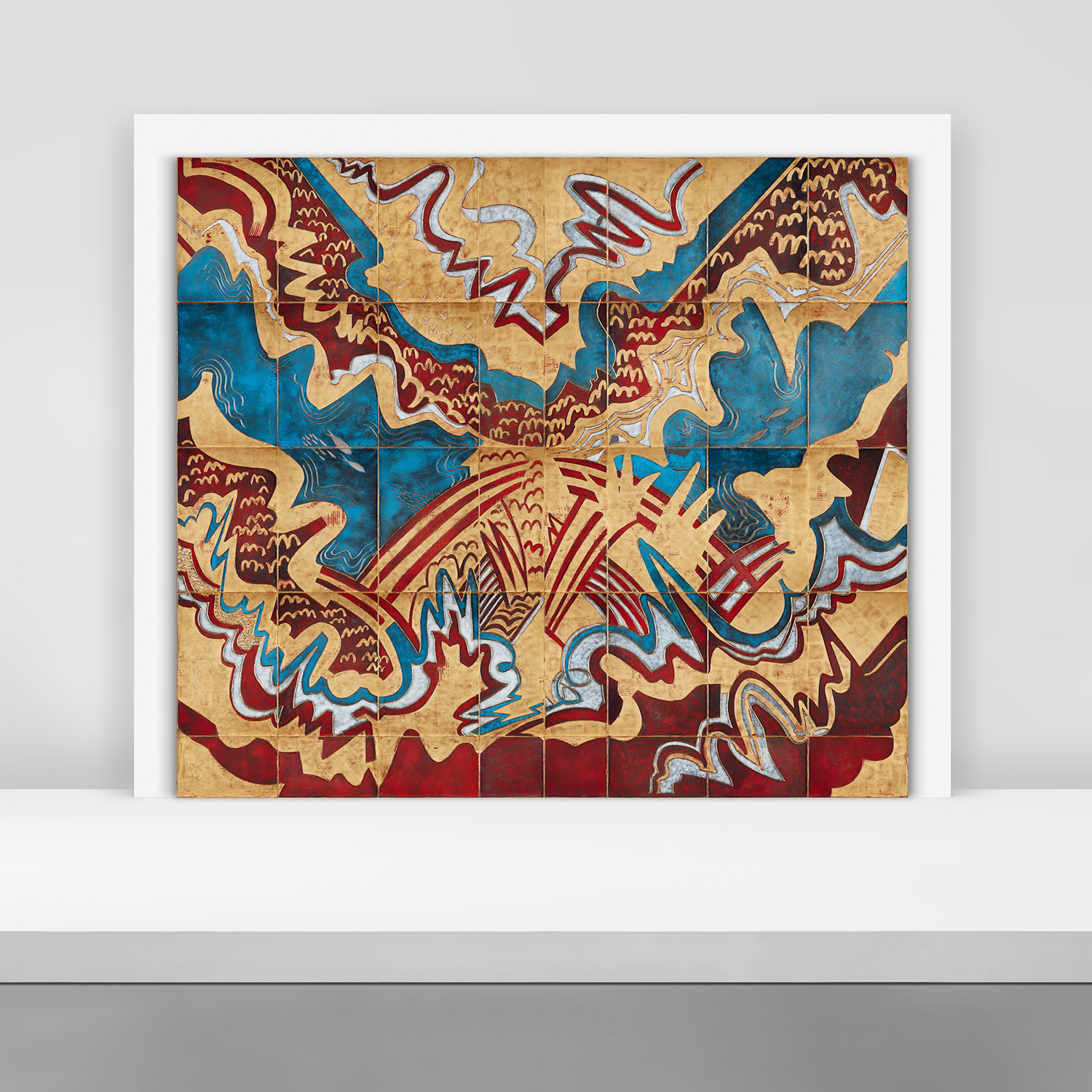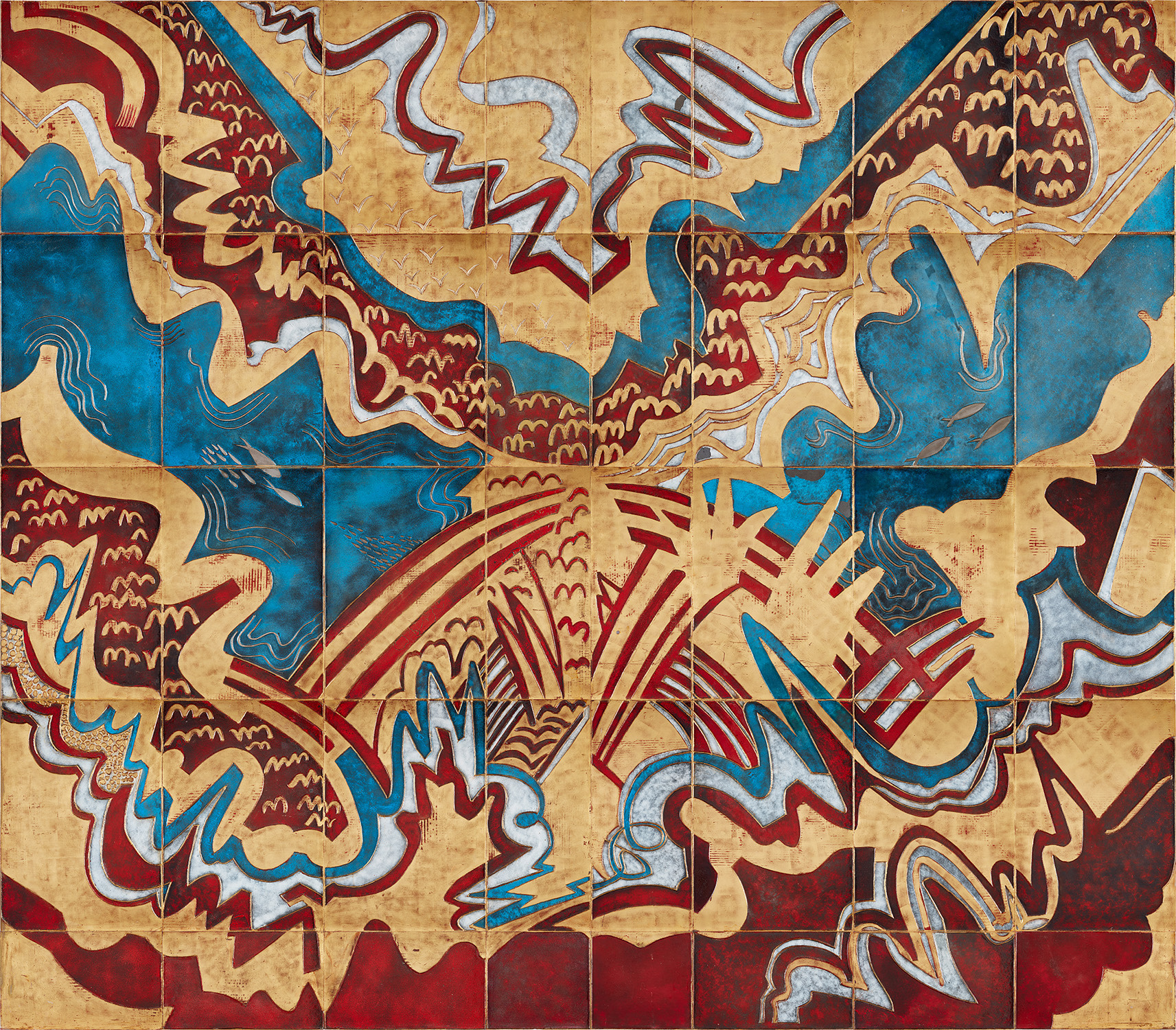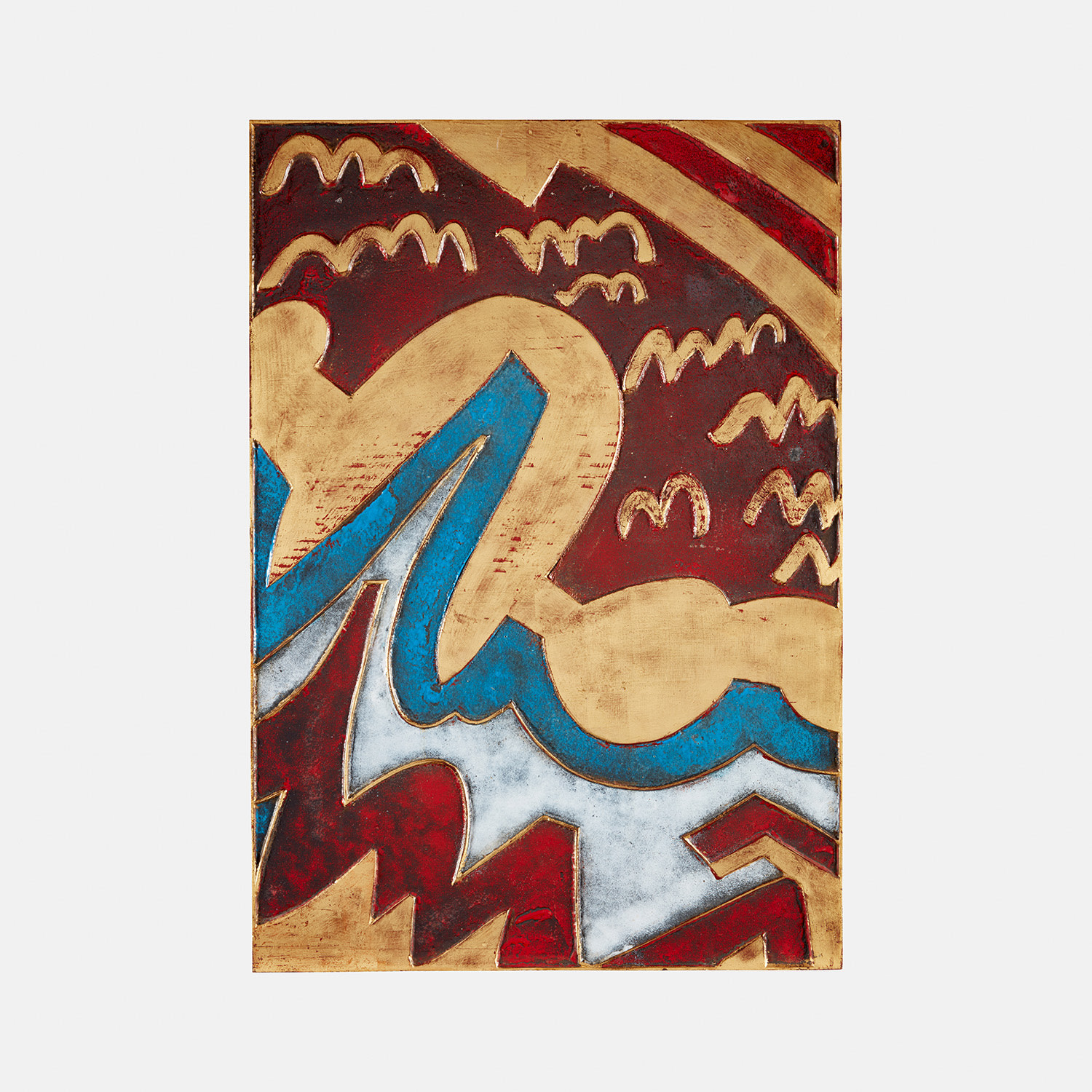









36
Gustave Miklos and François Louis Schmied
"La Rivière Enchantée," unique paneled wall composition
circa 1930
Enameled and gilt cast iron.
Overall: 112 x 128 x 1/2 in. (284.5 x 325.1 x 1.3 cm)
Comprising forty panels.